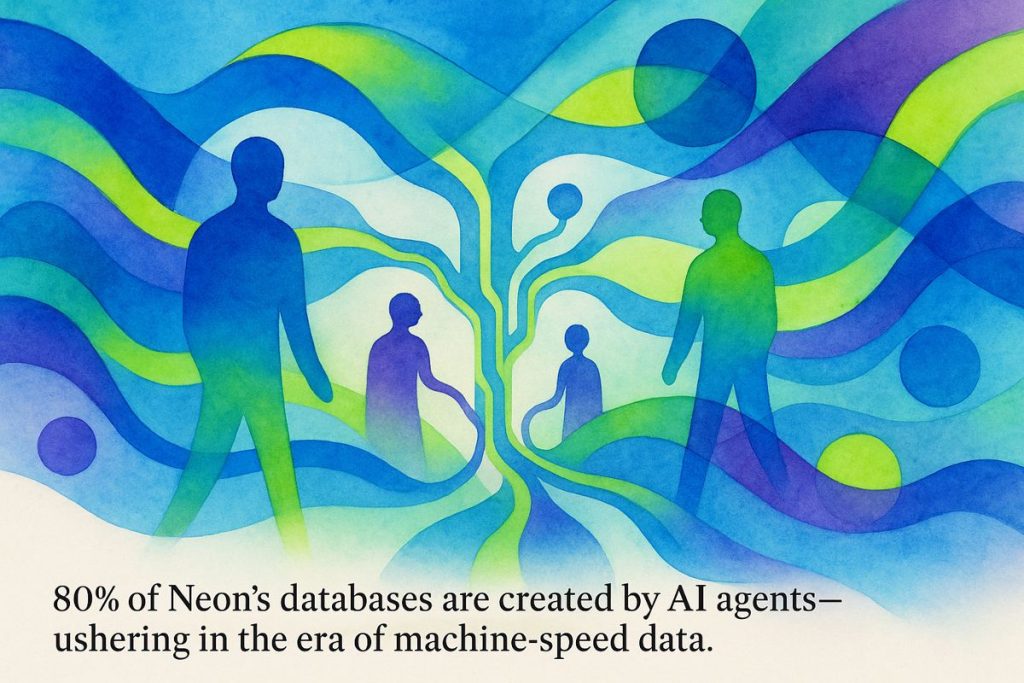Databricks bought Neon to bring together transactional and analytical data in one powerful platform, using Neon’s speedy, serverless Postgres technology. Neon’s special design lets databases start in milliseconds and scale up or down instantly, which is perfect for AI that needs to create and manage lots of databases super fast. This move helps developers build AI-powered apps quickly and easily, with tools that feel as smooth as using Git for code. The deal makes Databricks a bigger player in the data world, offering a one-stop shop for companies, especially in fields like life sciences, to manage all their data needs.
Why did Databricks acquire Neon, and what does it mean for AI and serverless Postgres?
Databricks acquired Neon to unify transactional and analytical workloads within its Lakehouse platform, leveraging Neon’s cloud-native, serverless Postgres technology. This integration enables rapid provisioning, AI-driven database management, and seamless developer workflows, accelerating the deployment of AI-backed applications with elastic scalability and open-source compatibility.
A Watershed Moment: Databricks Bets Big on Neon
If you’d told me a year ago that Databricks—already something of a palimpsest in the cloud data world—would splash out a reported $1�billion for a database startup, I’d have smirked and muttered, “Stranger things have happened, but really?” And yet, here we are. As of spring 2025, Databricks has inked an agreement to acquire Neon, a cloud-native, serverless Postgres company that’s become the darling of developer forums and hyperspectral tech podcasts alike. The implications? Substantial, especially if you traffic in life sciences, pharma, or any vertical where data velocity leaves your head spinning.
I have to confess, my first reaction to the news was envy—tinged with the aroma of burnt coffee. Why didn’t I see this marriage coming sooner? In the world of data platforms, the tectonic plates are always shifting, and the Databricks–Neon deal is seismic. The core idea: unify transactional and analytical workloads, making it possible to build, deploy, and iterate AI-backed apps at breakneck pace—all within one ecosystem.
Neon’s Moonshot: Developer-First, Serverless, and Lightning-Quick
Let’s get specific. Neon’s not just another Postgres fork. Its architecture is a radical departure: compute and storage are separated, enabling scaling reminiscent of a jazz riff—elastic, spontaneous, but always in tune. I remember testing Neon last year: I spun up a fresh database instance in under 500 milliseconds (don’t worry, I timed it; I’m that kind of pedant). It felt like biting into a perfectly crisp apple after a day of soft fruit—unexpected, sharp, and deeply satisfying.
Developers, meanwhile, salivate over Neon’s branching and forking features. You can clone your production database faster than you can say “continuous integration,” experiment, and then toss the test branch aside like a draft email. This Git-like branching is invaluable for running hyperspectral test suites or staging feature rollouts, with zero risk to mission-critical data. If you want specifics (and you should), TechCrunch has the receipts: Neon’s database lifecycles are measured in milliseconds, not minutes.
And here’s the kicker: the majority—over 80%—of databases Neon provisions today are at the behest of AI agents, not carbon-based lifeforms. Yes, you read that right. AI agents are now spinning up databases at what can only be described as machine speed, a trend that leaves traditional database architectures gasping for air like marathoners at altitude.
Where AI Agents and Modern Databases Intersect
Let’s pause and ask: why does this matter? For one, the rise of agentic AI—algorithms that orchestrate data workflows end-to-end—demands a new breed of database. These agents need to provision, scale, and retire data resources in an eye-blink, with cost models that flex according to actual usage rather than antiquated licensing. Neon’s model—serverless, usage-based, and relentlessly efficient—is purpose-built for this. It’s almost as if the codebase were laced with a touch of promethean zeal.
Databricks CEO Ali Ghodsi put it plainly in the official press release: the acquisition equips Databricks to handle the “instantaneous and unpredictable demands” that characterize this new chapter, where AI isn’t just supporting business logic—it’s driving it, full throttle.
I’ll admit: back when I first played with AI agents provisioning ephemeral databases for integration tests, I was skeptical. Wouldn’t the overhead be prohibitive? Turns out, my intuition was off. By late 2024, it was clear that this workflow wasn’t a quirk—it was a harbinger. Sometimes, you have to eat crow. Or borscht. Whatever fits.
Databricks + Neon: The Lakehouse Grows Tentacles
Once upon a time, Databricks positioned itself as the “Lakehouse”—the confluence of data lakes and warehouses. Now, with Neon, it’s threading transactional data (OLTP) and analytical data (OLAP) together more tightly than a pair of Russian nesting dolls. Matei Zaharia, Databricks’ own co-founder and a name that’s never far from the zeitgeist of data engineering, described the integration as a way to make “building end-to-end data and AI apps…much easier.” You can almost hear the collective exhale of developers worldwide.
Let’s not mince words. This is about closing the gap with heavyweights like AWS Aurora and Snowflake. But Databricks is also playing the long game, betting on open-source compatibility and operational agility. If you need a side-by-side breakdown, CelerData has a lucid comparison, though the post-Neon landscape is still evolving.
What does this mean in practice? For one, life sciences and pharma firms—who routinely wrangle terabytes of data from clinical trials and drug discovery pipelines—now have a unified platform to support both their analytical models and transactional tracking. Less time futzing with integrations, more time sifting for insights. That’s worth at least a celebratory cup of Ethiopian Yirgacheffe.
Sticking to Open Source, Expanding the Ecosystem
There
